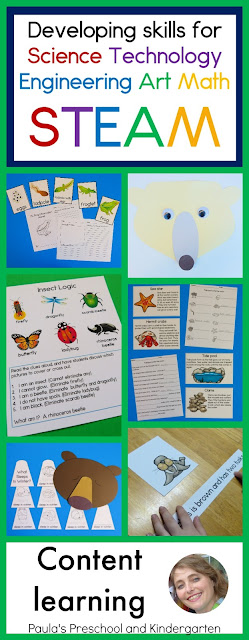There are so many other, more exciting ways to present content information, and to help our students learn the facts they need to know. Today I'm going to show you some of my favorites.
My students love to observe and explore, so I have always included real animals in my classrooms. My first year teaching I had a fish tank (good plan), raised caterpillars (good plan), had plants in the classroom (good plan), and raised two ducklings (NOT a good plan - they poop a LOT, smell, and need fresh water a couple of times a day). Since then we've also had tadpoles and frogs, earth worms, various insects, herb, vegetable and flower gardens, a hamster, and an outside area full of possibilities. Children (and adults) find nature fascinating, and can learn a tremendous amount from observing the plants and animals in our world. Why not provide a way for them to record what they see?
Of course, some things are best learned about at a safe distance (sharks and piranhas for example), or are inaccessible. When we use awesome pictures and information presented at an age appropriate level, factual content can be fascinating and engaging. To make it easier to find just the right text, most of my guided reading books include texts at multiple levels.
Solution #2: non-fiction guided reading texts
Even emergent readers want to learn about the world around them, so it's important to find non-fiction texts they can master.
Solution #3: informational craftivities
Solution #4: read and write the room
... and so can logic puzzles....
Solution #5: Non-fiction logic puzzles
... and simple sentence picture match activities!
Solution #6: sentence picture match
What are your favorite ways to make learning content engaging? Is there a subject you wish you could find this kind of resources for? (I'm always looking for ideas of resources to create!) Let me know in the comments!










No comments:
Post a Comment